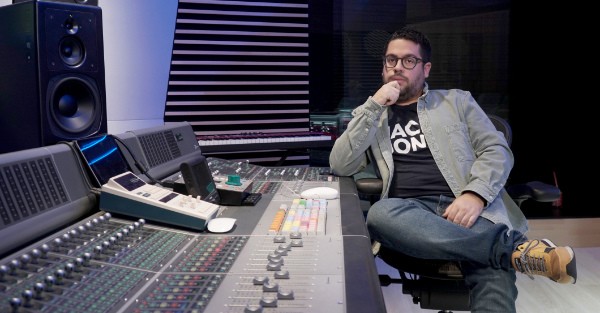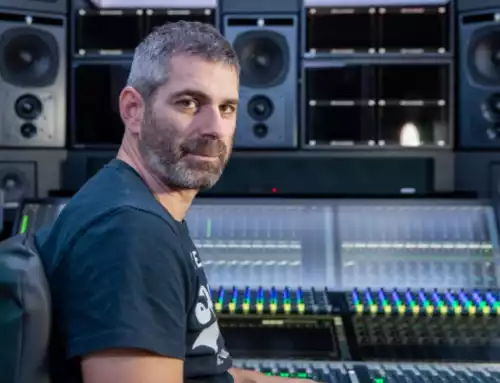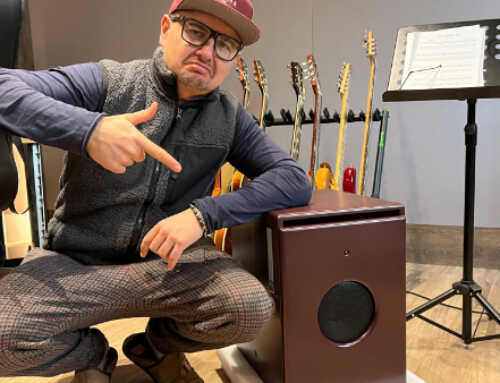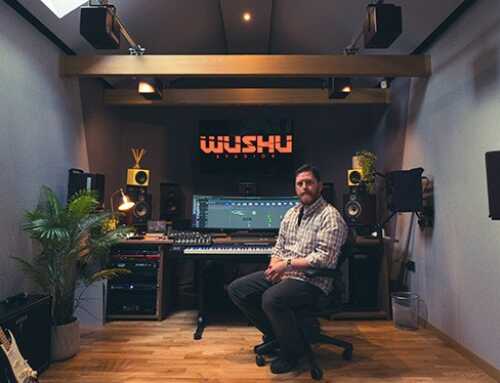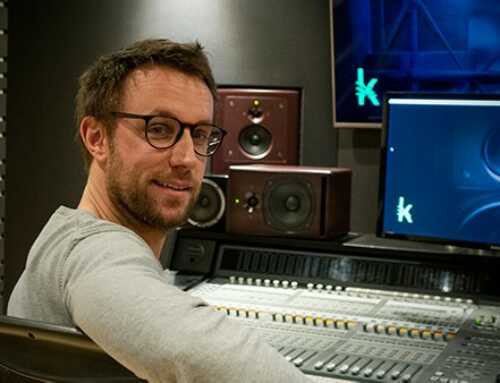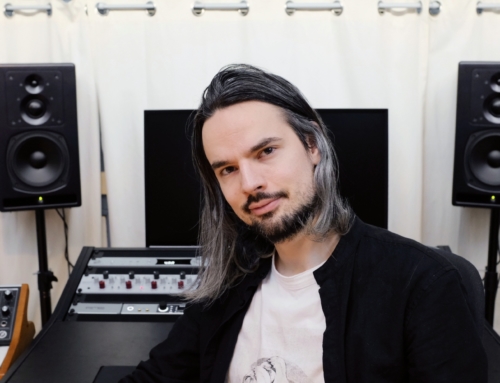Pentasonic Studios (Sergio Peiró): Valencia, Spain
Sergio Peiró has realized his dream: a music production studio completely designed by and for him. He recently upgraded his studio with PSI Audio A25-M monitors and A225-M subwoofers.
How did you get into music and music production?
Sergio Peiró: I started my journey in music when I was six years old with academic piano training. When I was 12, I also started studying percussion, which would later help me in the studio. It makes it easier to communicate with musicians, improves intuition and know-how when it comes to editing music, as well as helping with decision-making and arranging as a producer. When I finished my studies at the conservatory of music, I was already a bit tired of the classical world, so I started studying sound. At that point, I already had my first studio, in my parents’ garage like almost everyone. I continued my training with producers and engineers from both the national and international scene, such as Caco Refojo, Oscar Vinader, Chris Lord Alge, Manuel Tomas, Lulo Perez and Rafa Sardina. My first studio was called SP Estudios, I worked there for 16 years. I grew, learned, and made mistakes, but the experience gave me the ability and confidence to literally tear down that studio and build the dream of my life, Pentasonic Studios.
What are your most important milestones?
Sergio Peiró: It’s difficult to highlight just a few albums because there have been many, very varied, and of many styles. But one of the projects I’m most proud of is my friends from Evadne, a Spanish Doom Metal band, and their latest work: “The Pale Light of Fireflies.” It’s an album with many hours of production, arrangement, recording, and mixing behind it. Another project that I have very fond memories of is the Disney movie “Beauty and the Beast,” for several reasons. It was very exciting that a movie I grew up with as a child would be a movie I would be in charge of recording just when I turned 30. It was like closing a cycle of my life. It was intense, but exciting and very rewarding. Anyway, I would leave out naming more than 200 albums that, as I love my job, I find a good part of myself in all of them. Some artistically, others technically, and others due to their media impact, etc.
When did you decide to open your own studio? How did that come to pass?
Sergio Peiró: My first studio was SP Estudios, which initially was a room that my parents built so I could study both piano and drums without disturbing the neighbours, only that I asked them to put a glass between the two rooms I had. (I already knew that I wanted to set up a studio, even though I was only 15 years old at that time.) Little by little, with my first musician’s earnings, I started investing in equipment and recording bands, both rock and jazz, and gradually the studio grew, with more and better equipment and increasingly serious productions. I often had to reject projects due to lack of space, or I had to go to larger studios to do them in decent conditions. I also worked in one of the best studios in Spain, and these combined experiences gave me the confidence and motivation to plan my new recording studio with optimal technical and acoustic conditions and to build a recording studio from scratch. Yes, it was absolute madness in terms of design, wiring, and execution. My acoustic engineer Imar Sanmartí from the company Acousthink did impeccable work. I handled the management and coordination of all the other companies involved in the project, as well as all the design and installation of audio, electrical, video, and data wiring in the studio. It was an incredible amount of work, but now I get to enjoy it every day with my clients and friends who place their trust in me for their productions.
The way your studio is built, it seems to also be a hangout for the musicians (the pool, for example). Is that your approach?
Sergio Peiró: I’ve always been obsessed with the idea that the studio has to be a comfortable place that encourages creativity with rest areas, outdoor spaces, and yes, the pool too. However, that pool had already been built previously with the first studio, and honestly – we don’t use it much. There’s usually not much free time during recording sessions to take that long-awaited dip. But being able to step out onto the terrace, get some fresh air, and disconnect is fabulous. There are also spaces for meals. We’re in Valencia, the birthplace of paella, a dish that culturally brings people and friends together, so we often make paella during lunchtime. When I have time, I like to cook these typical Valencian dishes. A good engineer friend told me once: “Cooking is like audio. You have to have the sensitivity to add a touch of salt, garlic, or pepper. You need to know what level of reverb, delay, or equalization the song needs.”
Do you have a piece of advice for producers who are trying to make it in the industry?
Sergio Peiró: Success is not a word I particularly like. It is something we all desire, but at the same time, it can be frustrating when it doesn’t come, and it may not come for various reasons, making us believe that we’re not good enough. My advice is to listen to a lot of music so that you can build criteria for your own decisions when you produce music. Work hard to deliver good work that satisfies both you and your clients. This beautiful profession is a way of life. Another important piece of advice I wish someone had given me earlier: you have to invest in acoustics and good speakers. If you can’t hear it, you cannot equalize it! Since I have this new workspace, I realize how incredibly important it is, even if it seems almost like a cliché.
How important is your monitoring for you?
Sergio Peiró: Again: If I can’t hear it, I can’t equalize it. For this reason, the combination of impeccable acoustics and the ability of speakers to reproduce what is happening inside the DAW or in the recording rooms with absolute fidelity and definition is vital for my ability to equalize or compress properly. Even in the recording phase, a good listening setup helps decide if the mic position needs to be changed, or the mic itself. No need to imagine what the result will sound like in the end. And no “fit it in the mix”.
You use PSI Audio. How did you get to this choice?
Sergio Peiró: When I worked at a major studio in my country, they received PSI Audio speakers. I had never heard of them, but my learning curve with them was instantaneous due to their flat, pleasant, and true response. The people at Swiss Audio (the official importers of the brand in Spain) offered me advice and facilities to choose the right model for me, allowing me to listen to the entire range of their products before making the purchase. I was and am in love with the A21-M; it seems like an unmatched option in the current market. However, at the same time, I wanted a full-range system for my studio like the A25-M with A225-M Subs, and I am delighted with their performance. Soon, a set of A21-M will be in the studio, too. These speakers complement each other wonderfully. And I don’t rule out some A14-M for my home, a small-format option but with a fabulous and incredible sound considering its size.
What do you like about the PSI Audio speakers?
Sergio Peiró: There are many reasons why PSI Audio was the winner in my trials, and by a wide margin. For me, there are three key points. Firstly, they don’t cause auditory fatigue in long recording, mixing, or mastering sessions. It’s essential to leave the studio without those headaches and without being mentally exhausted from exposure to harsh sounds that other speaker manufacturers produce. For me, this is a crucial point. Secondly, they offer a flat response even at low sound pressure levels, a fundamental aspect if we want to take care of our ears. My previous monitors forced me to raise the listening level considerably to perceive soft details in the mixes. Finally, the definition in the musical elements lower down in the mix is astonishing. Being able to adjust the plane, the location with microscopic precision, as having the final decay of a reverb perfectly audible, being able to adjust everything to the perfect setting – it’s brilliant. My old monitors tended to over-emphasize wet effects due to a masking effect, so it was impossible to make a proper judgment. Only when I left the studio and listened on my AirPods or in the car, I wanted to go back to the studio to implement changes. I also had to keep in mind their defects and act accordingly, watching peak meters to know if I was overdoing the bass or treble. Fortunately, all of that is now history since I work with PSI Audio. My ears and I are grateful for it.

